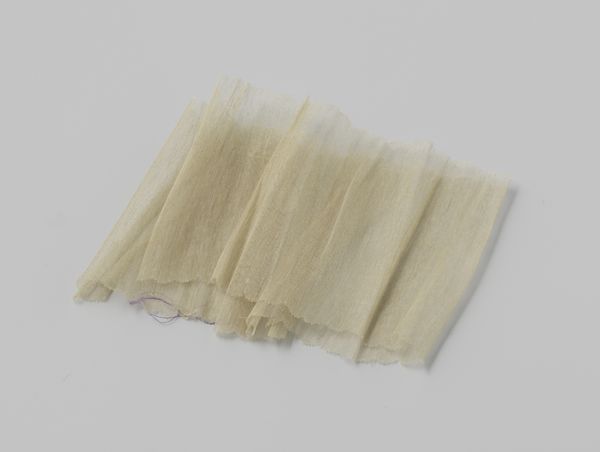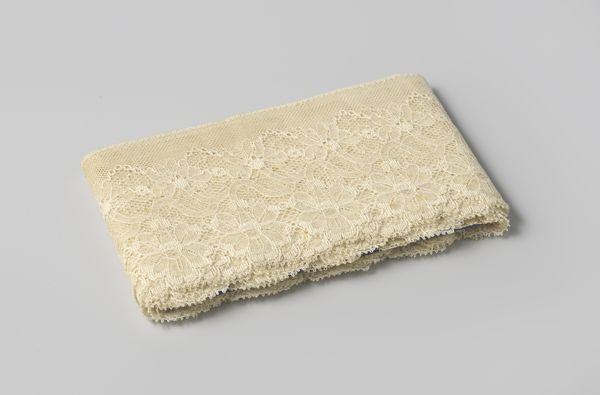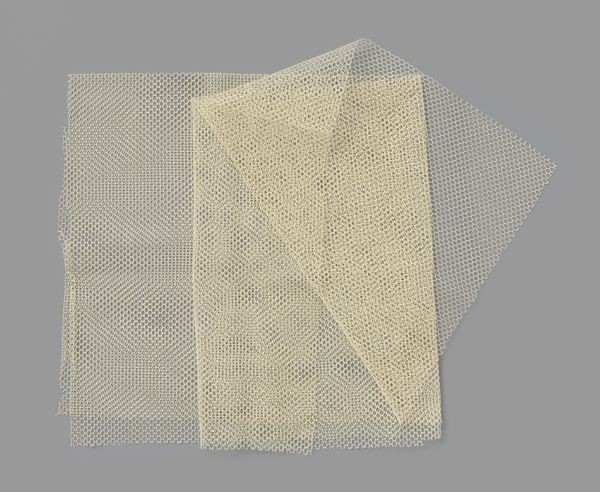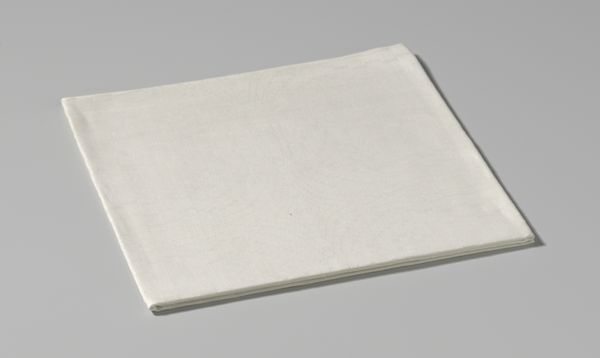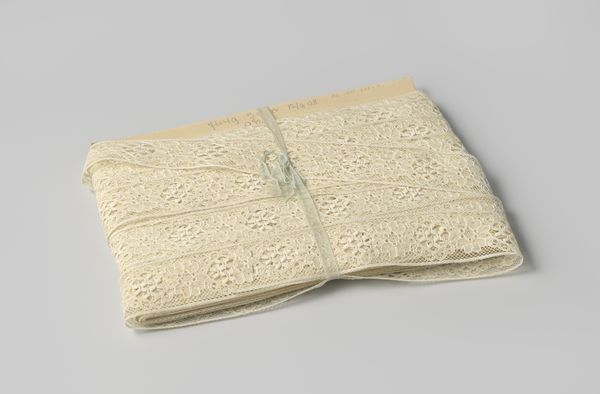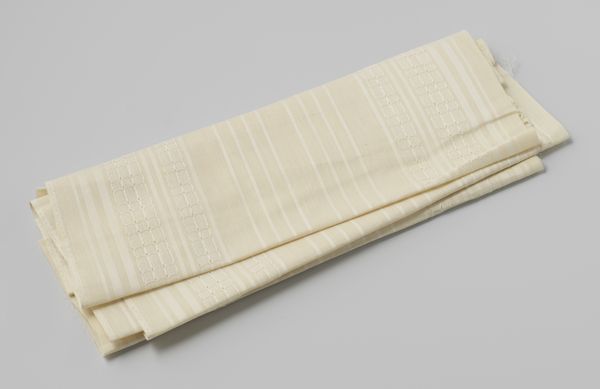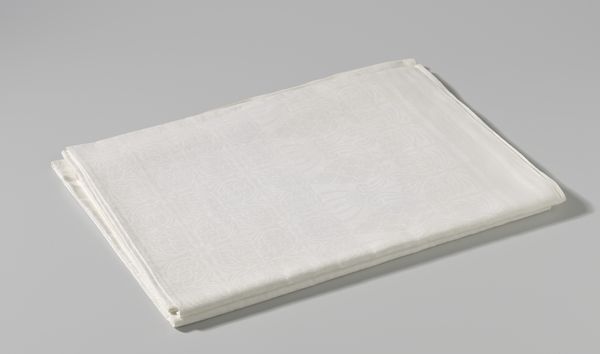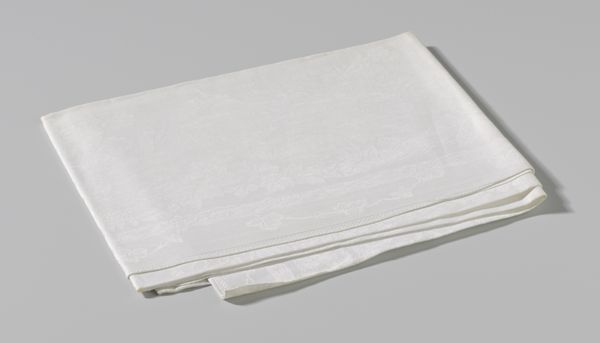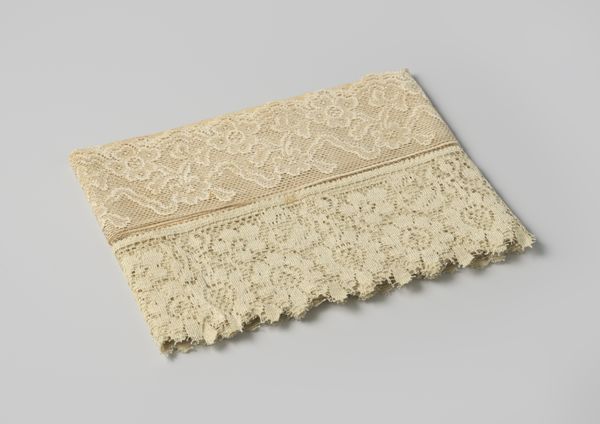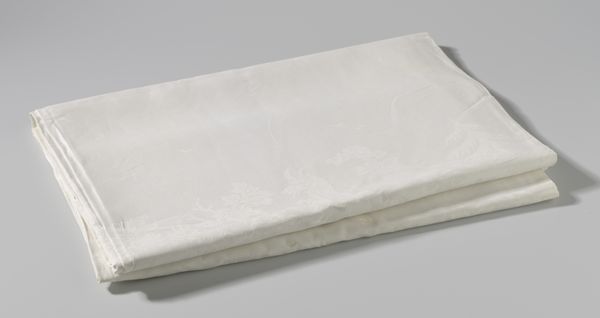
mixed-media, textile
#
mixed-media
#
textile
#
abstraction
Dimensions: width 14 cm, length 180 cm
Copyright: Rijks Museum: Open Domain
Curator: This delicate work before us, titled "Strook parasolgaas, écru, in schulpen geknipt"—that translates to "Strip of parasol netting, ecru, cut in scallops"—was crafted sometime between 1910 and 1940. It resides here at the Rijksmuseum. The artist credited with this textile creation is Gustav Schnitzler. Editor: My first impression is one of understated elegance, it has a quiet, almost ethereal quality, doesn’t it? The simple texture and subtle colour evoke a feeling of calm. It almost reminds me of antique lace. Curator: Yes, and it’s interesting to consider this fragment within the context of early 20th-century social life. Parasols were essential accessories for women, signifying status and protection from the sun's tanning effect, so very un-en-vogue at the time. Editor: Absolutely, the netting would be a cultural signifier. But I see the scallop cut also hinting at shell forms, linking it to broader notions of beauty, femininity, even birth, a subtle connection with ancient iconography. Curator: Fascinating observation! Schnitzler would certainly have been conscious of these symbolic associations within art and design. And in repurposing the material, it's an act of both preserving history and exploring abstraction, it makes you wonder what context it would have come from before being here. Editor: It's not hard to picture the material catching the light in motion; so in thinking of it moving, its weight in visual culture makes it difficult not to imagine who may have originally carried it. What do you think? Curator: The creation challenges us to think about art beyond grand canvases. It reflects everyday lives and the objects we imbue with meaning as the decades pass and it’s role changes. Its story in textile design represents what was valued, what was used and where luxury could be found. Editor: So true; by understanding this fragment, both in terms of its functionality and its symbolic presence, allows it to resonate much deeper; It helps preserve and keep those lives present, as well.
Comments
No comments
Be the first to comment and join the conversation on the ultimate creative platform.
